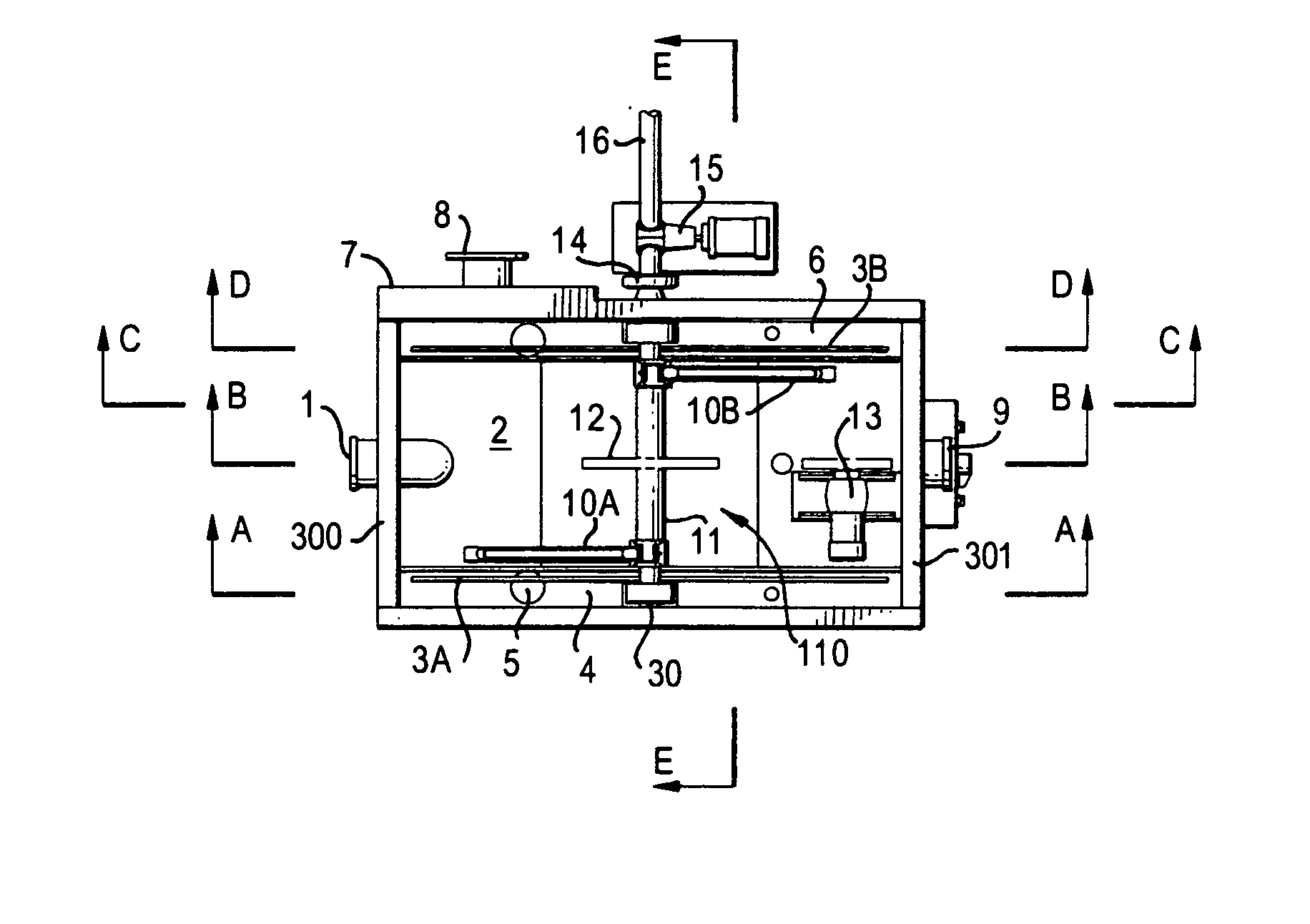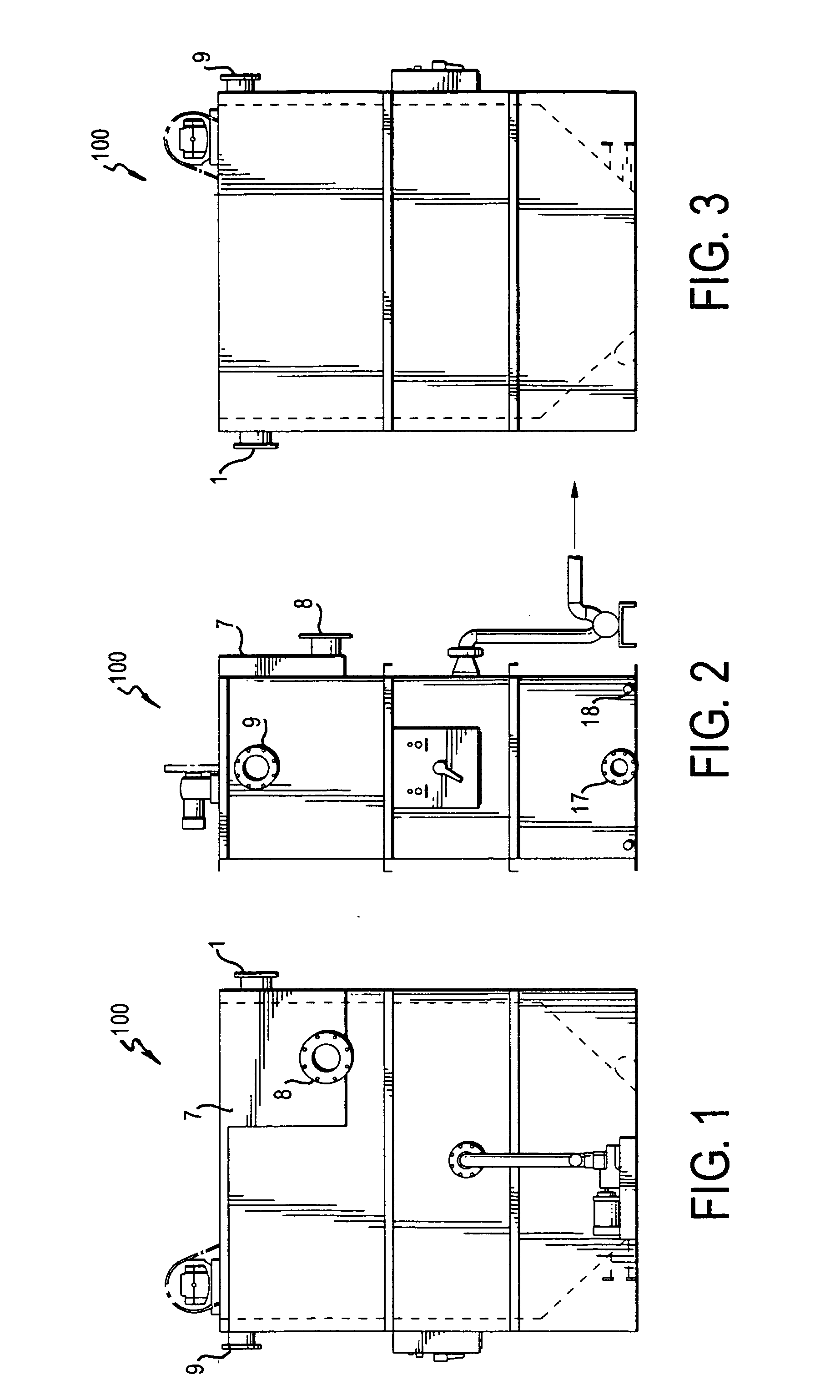Tertiary filter
a filter and material technology, applied in the direction of filtration separation, sedimentation settling tank, separation process, etc., can solve the problems of unsanitary conditions of the tank, the need to drain the tank, and the cumbersome manufacture and use of linear insertions, so as to achieve efficient replacement of filters and less energy to operate. , the effect of convenient maintenan
- Summary
- Abstract
- Description
- Claims
- Application Information
AI Technical Summary
Benefits of technology
Problems solved by technology
Method used
Image
Examples
first embodiment
[0038] A detailed view of the invention is disclosed in FIGS. 1-11. The filter apparatus is a filtration device for removing particles from a liquid. The apparatus may be used as a tertiary filtration system for filtering out such particles following treatment from an industrial or municipal wastewater treatment plant. The device may also be used as a primary filtration system in other capacities.
[0039]FIGS. 1-4 show the general features of a filter apparatus 100, which is generally of a box shape comprising several inner compartments. In one embodiment, the liquid to be filtered enters an upper portion of apparatus 100 via an influent pipe 1. Inside the apparatus the liquid is filtered to remove solids from the liquid. The cleaned liquid then passes through a discharge box 7 and is discharged through a discharge pipe 8.
[0040] As shown in FIG. 4, apparatus 100 is divided into three compartments, a dirty liquid chamber 2 and two clean liquid chambers 4 and 6. A transfer pipe 5 inter...
second embodiment
[0063] the invention is shown in FIGS. 12 and 13. The invention has generally similar operation and components, but has a second filter and wash assembly incorporated therein. In its operation, dirty liquid enters the filter apparatus 600 through influent pipe 601, which is separated and flows into dirty liquid chambers 602A and 602B. Filter assemblies 603A, 603B, 603C and 603D each filter out solids and materials. The clean water flows into clean liquid chambers 604, 604A and 606. The three chambers are connected via a transfer pipe assembly 605, whereby clean liquid flows in order to maintain an equilibrium between them. The clean water then rises and flows out of the filter apparatus through a effluent pipe 608. However, the embodiment of the invention is not limited to that shown in FIGS. 12 and 13 but can be extended further as shown in FIG. 15 to include any number of additional filtering units.
[0064] Wash assembly 710 has a similar appearance and function as disclosed in the ...
PUM
| Property | Measurement | Unit |
|---|---|---|
| length | aaaaa | aaaaa |
| width | aaaaa | aaaaa |
| sizes | aaaaa | aaaaa |
Abstract
Description
Claims
Application Information
 Login to View More
Login to View More - R&D
- Intellectual Property
- Life Sciences
- Materials
- Tech Scout
- Unparalleled Data Quality
- Higher Quality Content
- 60% Fewer Hallucinations
Browse by: Latest US Patents, China's latest patents, Technical Efficacy Thesaurus, Application Domain, Technology Topic, Popular Technical Reports.
© 2025 PatSnap. All rights reserved.Legal|Privacy policy|Modern Slavery Act Transparency Statement|Sitemap|About US| Contact US: help@patsnap.com



